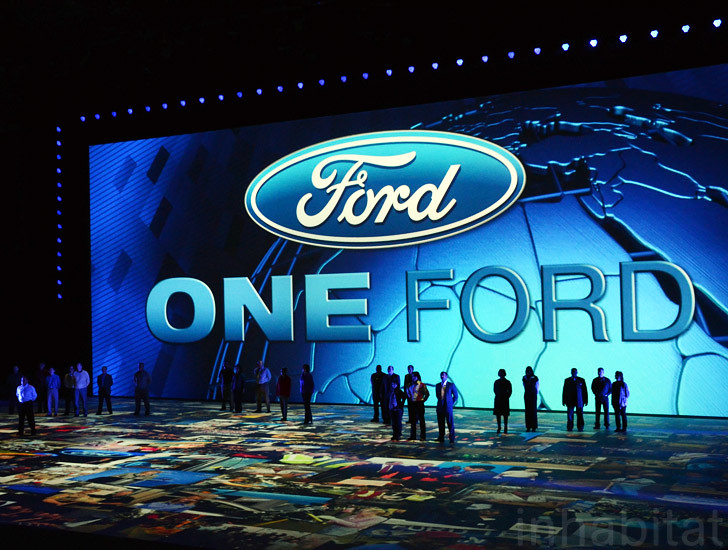Ford Motor Co. is facing significant challenges in securing a steady supply of rare earth magnets — a crucial component in electric vehicles (EVs) and other modern technologies — according to CEO Jim Farley, who spoke to Bloomberg News in an interview published Friday.
The automaker’s struggles come amid mounting global concern over China’s dominance in the rare earth market. In April, Beijing introduced stricter export licensing requirements, adding new layers of bureaucracy for foreign manufacturers relying on these essential materials. With China controlling over 90% of global rare earth processing capacity, the move has sent shockwaves through supply chains, impacting industries from automobiles to defense.
Daily Uncertainty and Production Disruptions
“It’s day to day,” Farley told Bloomberg, describing how precarious the situation has become. “We have had to shut down factories. It’s hand-to-mouth right now.”

This candid admission underscores the fragility of Ford’s production pipeline. The company was forced to halt operations at its Chicago assembly plant, which produces the Explorer SUV, for a full week in May due to the shortage. While Ford has not issued an official response to inquiries from Reuters, the impact on manufacturing schedules and supply chain coordination is already evident.
Despite receiving temporary export licenses from China earlier this month—along with other top U.S. automakers—Ford continues to struggle. These licenses, reported by Reuters, were expected to alleviate some pressure on major American carmakers. However, Farley’s comments suggest they have not yet brought the stability or volume of material that the company needs.
Market Response and Investor Concerns
The uncertainty surrounding Ford’s rare earth supply is beginning to rattle investors. Shares of Ford slipped nearly 1% in early trading following Farley’s remarks, although the stock has still posted a gain of over 7% since the beginning of the year.
While the market reaction remains relatively muted for now, the longer-term concern is more serious. As demand for electric vehicles surges globally, automakers’ dependence on stable supplies of rare earth elements—particularly neodymium and dysprosium used in EV motors—becomes a strategic vulnerability.
Rare Earths A Critical Resource for the EV Race
Rare earth magnets are essential for the motors used in electric vehicles, offering higher efficiency and greater performance compared to alternatives. Automakers like Ford are among the largest industrial consumers of these materials. Any disruption to supply chains not only threatens production targets but could also delay EV rollout timelines and push up prices for consumers.
The current shortage comes at a time when Ford is aggressively scaling up its EV ambitions. The company has pledged to invest billions into electrification over the next few years, launching new models and expanding battery production in an effort to compete with industry leaders like Tesla and General Motors. But without a reliable source of rare earths, these plans face significant headwinds.
Western Efforts to Break China’s Grip
In response to China’s overwhelming control of rare earth processing, the U.S. and its allies have been working to diversify their sources of supply. Australia and Canada are ramping up mining operations, and the U.S. government has allocated funding to support domestic refining and magnet manufacturing. Several new facilities are under development, but these efforts will take time to mature.
For now, however, China remains the undisputed giant of the rare earth world—not just in raw material production, but in processing and refining, where most of the global capacity is concentrated. As a result, even if countries like the U.S. succeed in mining their own rare earths, they still face bottlenecks in processing them into usable forms.
A Geopolitical and Economic Challenge
The rare earth crisis is about more than just production delays or supply hiccups—it’s a geopolitical issue that touches on national security, trade policy, and the transition to green energy. Fighter jets, wind turbines, smartphones, and electric vehicles all rely on these specialized materials. As such, access to rare earths is becoming a key point of leverage in global diplomacy.
Ford’s ongoing challenges highlight how dependent even the most sophisticated automakers remain on a single country’s willingness to export key components. Farley’s remarks suggest that despite government intervention and temporary reprieves, the industry remains vulnerable to sudden policy shifts and export restrictions.
The Road Ahead for Ford
To address these issues, Ford and other automakers are actively seeking alternative strategies. These include investing in recycling programs, forging supply partnerships in friendlier jurisdictions, and exploring magnet designs that use fewer or no rare earth materials. However, such innovations are still in their infancy and cannot meet current scale demands.
In the meantime, companies must manage production on a “hand-to-mouth” basis, as Farley described, making long-term planning difficult and costly. The uncertainty could also discourage further investment in EV programs if supply chain volatility continues.

As global competition for rare earths intensifies and Western nations race to establish independent supply chains, automakers like Ford find themselves at the frontline of a critical industrial and geopolitical battle. Whether they can secure the resources they need without major compromises remains an open question—and one with high stakes for the future of electric mobility.
Conclusion
Ford’s ongoing struggle with rare earth magnet shortages underscores the fragile state of global supply chains and the high-stakes reliance on China’s dominance in rare earth processing. Despite temporary export licenses offering brief relief, the company’s production disruptions and “hand-to-mouth” operations reveal a deeper structural vulnerability not just for Ford, but for the broader EV industry. As the push toward electrification accelerates, automakers must urgently diversify their supply sources, invest in alternative technologies, and work with governments to build resilient, domestic capabilities. Until then, the race to produce the next generation of electric vehicles will remain tightly bound to the uncertain dynamics of international trade and geopolitics.




One thought on “Ford Grapples With Rare Earth Magnet Shortage Amid Chinese Export Curbs”